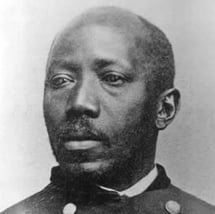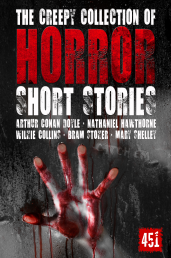In anticipation of the US release (June 15th) for our upcoming anthology Black Sci-Fi Short Stories, Patty Nicole Johnson takes a look at five of the authors who laid the foundations of black science fiction writing and are essential reading.
Founders of Black SF: Martin R. Delany & Blake; or The Huts of America
By Patty Nicole Johnson
 The 2016 film The Birth of a Nation followed the story of Nat Turner, a leader of a slave rebellion in 1831. The director’s use of the same title as the 1915 Ku Klux Klan propaganda film was an effort of reclamation of thought behind nation building. Martin R. Delany (1812–85), the abolitionist and first Black field officer in the U.S. Army, produced a collection of works that resonate with the ethos of nation claims, belonging and place.
The 2016 film The Birth of a Nation followed the story of Nat Turner, a leader of a slave rebellion in 1831. The director’s use of the same title as the 1915 Ku Klux Klan propaganda film was an effort of reclamation of thought behind nation building. Martin R. Delany (1812–85), the abolitionist and first Black field officer in the U.S. Army, produced a collection of works that resonate with the ethos of nation claims, belonging and place.
Born to an enslaved father, Delany’s story might have had a different ending if his free mother didn’t flee persecution caused by teaching her children how to read and write. Using the resources available, Delany began an apprenticeship as a physician and opened a medical practice soon after. He published a newspaper called The Mystery and later joined Frederick Douglass (1818–95) in producing and promoting the anti-slavery newspaper The North Star. Delany went on to finish his education at Harvard Medical School.
Delany believed, as apparent in his papers, The Condition, Elevation, Emigration, and Destiny of the Colored People of the United States (1852) and the Official Report of the Niger Valley Exploring Party (1861), that even abolitionists would never accept Black people as equals, and the only solution was a return to Africa. He led an emigration commission to West Africa to scout potential re-habitation sites along the Niger River. He wrote, “We are a nation within a nation, we must go from our oppressors.”
The man called ‘the father of Black nationalism’ even lent his mind to the fiction world. The 1859 story, Blake; or The Huts of America, appeared in serialized form in two magazines before the U.S. Civil War. The story ignites a call for enslaved Black people to resist the institution of slavery. The use of fiction sought to engage readers in this plight of social injustice.
Early in the story, a group of slave owners discuss a woman named Maggie who serves as a maid to Mrs. Franks, wife of Colonel Franks. She dotes on Maggie – who, in a tale as old as time, is the daughter of Colonel Franks – relating to her more like a younger sister. In the dinner's course, it’s decided that Maggie would be sold to one of the couples and taken to serve in their winter retreat house in Cuba.
They don’t inform Maggie’s husband, Henry, in an act they think will lessen the harm, yet he’s obviously enraged. Henry refuses orders and the Franks degrade him, ultimately threatening to sell him. In an argument, the Franks evoke their Christianity in their previous treatment of Henry and Maggie.
Through an impressive use of eye dialect, Daddy Joe and Mammy Judy, Maggie’s parents, call on Henry to have faith in God. The sharp contrast of the phonetic spelling of his in-laws’ speech patterns informs the readers of the difference in education levels of enslaved Black Americans.
Readers learn that Henry was not born into slavery. He was born free in Cuba to parents who were successful tobacco planters. Boarding a ship he believed was used for war, he finds himself on a slave ship and is kidnapped. Back to the present day, Henry, who assumes the surname Blake, is allowed to evade an auction as Colonel Franks aims to play a ruse on his wife. Yet Henry uses this opportunity to travel throughout the Antebellum South. He meets enslaved people through his travel to their huts, documents their stories and spreads visions and instructions of revolution, all the while evading the ploys of Colonel Franks and slave capturers.
Henry leads a group of escaped slaves to Canada, yet finds that the freedom he sought isn’t realized there either, as even the educated can’t go into public buildings or sit on a jury. This notion of fleeing to Canada for a better life is not lost on the modern U.S. citizen, as we often look to our neighbors to the north – who enjoy socialized healthcare – as an ideal of what’s possible.
Upon learning of Maggie’s residency in Cuba, Henry sets sail to buy her freedom. He quickly takes up the same notions of revolution and leads an effort in Cuba to free the enslaved. The reunion with his wife is short-lived, as after he buys her freedom he heads to Africa. The story resembles Delany’s own life as he, like Henry, sought to emigrate to Africa. The novel is unfinished, with the six final chapters missing (though believed possibly to have been published in editions of The Weekly Anglo-African Magazine that have not survived).
The novel has other parallels with Delany’s own life in its graphic depictions of violence toward slaves, such as the depiction of a child being beaten to death. As mentioned previously, Delany penned this tale in an effort to excite the masses in an example of what was possible. Yet, with the start of the Civil War and Delany’s activism taking a different route, the story fell into the genre of alternative history.
Narratives taking place during times of U.S. slavery are common. However, many are near retellings of historic events, which do much to inform but can cause harm to the reader. Alternate histories that take a speculative approach on social sciences are a welcome deviation from the age-old slavery tale. Because while this story was about family and freedom, it also delved heavily into the impressions one makes on another and how hope and confidence can be instilled by a charming leader, which is sociology. While history is set in stone and we must continue to deal with the marginalization and injustice Black people still face today, it’s a welcome respite to postpone reality and live in the ‘what if’.
Brooke Obie’s Book of Addis: Cradled Embers followed in the Delany tradition of alternate history. The novel centres on women and how they built a web of allies on the path toward liberation. In an interview with the Black Youth Project, Obie referred to her book as a “neo slave narrative”, as it’s a work of fiction not filtered through a white lens. She calls to attention the practice of abolitionists of toning down the content of these narratives in fear the white majority would not believe the more horrific accounts of the enslaved.
Janelle Monae, a prolific artist in science-fiction crowds, recently starred in the film Antebellum, which posits how slavery may re-surge in the modern day. The story turns the tradition of the alternate history of a slavery narrative on its head by combining it with a cautionary tale depicting how history can easily repeat itself. Both forms of alternate history are greatly important in the pantheon of science fiction. The collective has Delany to thank in his visions of freedom through rebellion and ultimate liberation for the African diaspora. The story is still being written to determine whether his ultimate vision will see realization.
Patty Nicole Johnson is a Black and Puerto Rican science-fiction writer. In her Chicago bungalow, she weaponises time travel, holograms, multiverses and more to envision a more equitable society. Her work has been published or is forthcoming in New American Legends, On the Seawall, Midnight & Indigo, Constelación and
Black Sci-Fi Short Stories combines new stories with early speculative and proto-science fiction by Black writers of an older tradition. Alex Award-winning novelist Temi Oh provides the foreword, alongside an introduction by Sandra M. Grayson, author of Visions of the Third Millennium: Black Science Fiction Novelists Write the Future (2003). With invaluable promotion and editorial support from Tia Ross and the Black Writers Collective.
Dystopia, apocalypse, gene-splicing, cloning and colonization are explored within the collection by new authors and combined with proto-sci-fi and speculative writing of an older tradition (by W.E.B. Du Bois, Martin R. Delany, Sutton E. Griggs, Pauline Hopkins and Edward Johnson) whose first-hand experience of slavery and denial created their living dystopia. Many of the themes in Sci-fi reveal the world as it is to others, show us how to improve it, and give voice to the many different expressions of a future for humankind. You can find the full contents list here.
Make sure to come back next week to learn about Sutton E. Griggs!





